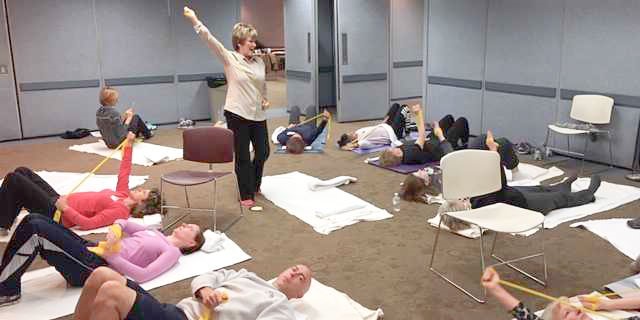
Gender-affirming vaginoplasty is a major surgical milestone in the gender transition process for many transfeminine individuals. As pelvic rehabilitation therapists, we play a critical role in supporting these patients post-operatively — particularly with respect to wound healing, dilation adherence, pelvic floor muscle function, and the resumption or initiation of sexual activity. An informed, trauma-aware, and affirming approach is essential to help optimize long-term outcomes and quality of life for transgender and nonbinary (TGNB) individuals.
Understanding Vaginoplasty and the Role of Dilation
Vaginoplasty creates a vaginal canal. Successful outcomes depend on surgical technique, tissue health, post-operative care, and patient adherence to dilation protocols. Dilation is essential for maintaining the patency and depth of the neovaginal canal, especially in the first year post-surgery when wound healing and scar tissue remodeling are most active. It is critical for patients to understand that the purpose of dilation is not just to preserve depth but also to promote scar mobility, reduce adhesions, and support sensory adaptation.
Dilation protocols vary slightly depending on the surgeon and the patient’s healing course. General phases include:
- Early post-op (Weeks 1–6): Patients are usually instructed to dilate 3-4 times per day. This phase aligns with active wound healing and high tissue reactivity.
- Subacute phase (Weeks 6–12): Frequency gradually decreases to 2–3 times per day as epithelialization occurs and inflammation subsides.
- Maintenance phase (3–12 months and beyond): Most patients are advised to continue dilation at least once daily or several times per week, depending on sexual activity levels and individual tissue response.
Sexual activity that involves vaginal penetration may substitute for some dilation sessions, but not entirely, especially early in the healing process. Patients must understand the purpose of dilation as not just preserving depth, but also promoting scar mobility, reducing adhesions, and supporting sensory adaptation.
Several factors can lead to adaptations in standard dilation protocols:
- Tissue source: When penile inversion alone is insufficient (e.g., due to lack of available skin), surgeons may use peritoneal grafts. This will mean two circumferential incisions. Some surgeons recommend dilation on day 6 post-op.
- Healing complications: Hypergranulation, infection, or partial dehiscence may lead to modifications in dilation. In such cases, rehab professionals must coordinate with the surgical team.
- Patient pain or dysphoria: Dilation can be a source of emotional and physical discomfort. This can lead to avoidance behaviors, increasing the risk of canal stenosis. Trauma-informed approaches and graded exposure are key strategies for rehab professionals to support patients in maintaining consistent dilation.
Sexual function following vaginoplasty is deeply personal and multifactorial. While surgical outcomes focus on aesthetics and depth, sensory outcomes can vary, depending largely on nerve preservation (especially the dorsal nerve of the penis) and individual healing. Sexual activity that involves vaginal or anal penetration is contraindicated in the first 12 weeks of the healing process.
Pelvic rehabilitation therapists may encounter:
- Pelvic floor hypertonicity or guarding: Fear, trauma history, or dilation discomfort can result in involuntary protective muscle patterns, contributing to pain with penetration or dilation.
- Lack of sensory feedback: Some patients report numbness or muted sensation in the neovagina, which can influence arousal and engagement in sexual activity.
- Functional impairments: Scar adhesions, stenosis, or asymmetry may affect function. Self-care with graded dilation, varying the type of dilator used, using the dilator to stretch the puborectalis, or using wearable dilators at night may be beneficial.
Affirming sexual health education — including discussion of lubrication products, positioning, and sensate mapping — is within the scope of a knowledgeable pelvic rehab provider. Supporting patients in developing trust in their bodies, understanding their anatomy, and embracing pleasure is a valuable contribution to the post-vaginoplasty journey.
Working with people from the transgender-gender diverse community requires more than clinical expertise — it demands an ongoing commitment to inclusive, affirming care. Rehab professionals should:
- Use accurate, affirmed names and pronouns.
- Avoid assumptions about anatomy, orientation, or sexual goals.
- Create a safe environment for disclosure, exploration, and education.
As pelvic rehabilitation therapists, our expertise in supporting transgender patients through post-operative recovery is paramount. By understanding the intricate details of healing and functional outcomes associated with genital gender-affirming surgeries — such as vaginoplasty, phalloplasty, and metoidioplasty — we can better address patient concerns around urinary, bowel, pain, and sexual function. Our work also benefits from a comprehensive appreciation of the societal and medical experiences that shape the journeys of transgender individuals, as well as the health effects of hormones relevant to differential diagnosis in rehabilitation.
Ready to advance your skills and provide truly affirming care? Register for Transgender Health for the Rehab Professional on August 2, 2025, and join us for an in-depth exploration of genital gender-affirming surgeries, postoperative healing, and the broader context of transgender health care. Secure your spot today to elevate your practice and support your patients with the latest evidence-based strategies.
Resources
- Unger, C. A. (2016). Care of the transgender patient: Surgical and non-surgical options. Clinical Obstetrics and Gynecology, 59(1), 114–126. doi:10.1097/GRF.0000000000000160
- Schechter, L. S., et al. (2020). Primary vaginoplasty: Techniques and outcomes. Clinics in Plastic Surgery, 45(3), 361–370.
- Kaefer, M., et al. (2023). Transfeminine vaginoplasty: Postoperative complications and management. Urology Clinics of North America, 50(1), 125–138.
- Reisner, S. L., et al. (2015). Global health burden and needs of transgender populations: A review. The Lancet, 388(10042), 412–436. doi:10.1016/S0140-6736(16)00684-X
AUTHOR BIO:
Sandra Gallagher, PT, DPT, WCS
 Sandra Gallagher, PT, DPT, WCS (she/her) is a pelvic health physical therapist in Portland, OR. Her practice includes providing evaluation and treatment of pelvic health conditions in adults and children of all gender identities. Dr. Gallagher received her primary physical therapy training in 1986 with a BS in Physical Therapy from the University of Lowell in Massachusetts. She has pursued varied continuing education in manual therapy, Feldenkrais, biophysical agents, pelvic health, and pregnancy. She completed her Doctorate of Physical Therapy in June 2020.
Sandra Gallagher, PT, DPT, WCS (she/her) is a pelvic health physical therapist in Portland, OR. Her practice includes providing evaluation and treatment of pelvic health conditions in adults and children of all gender identities. Dr. Gallagher received her primary physical therapy training in 1986 with a BS in Physical Therapy from the University of Lowell in Massachusetts. She has pursued varied continuing education in manual therapy, Feldenkrais, biophysical agents, pelvic health, and pregnancy. She completed her Doctorate of Physical Therapy in June 2020.
Sandi has served on varied committees and boards at the state and national level, most recently as the chair of the CAPP-OBC committee for the Academy of Pelvic Health of the APTA. She has presented on the role of PT in gender affirming vaginoplasty at the UCSF Transgender Health Summit, APTA Combined Sections Meeting, and at the 2018 international meeting of the World Professional Association for Transgender Health (WPATH). She is the recipient of the 2020 Elizabeth Noble Award from the Academy of Pelvic Health.






































